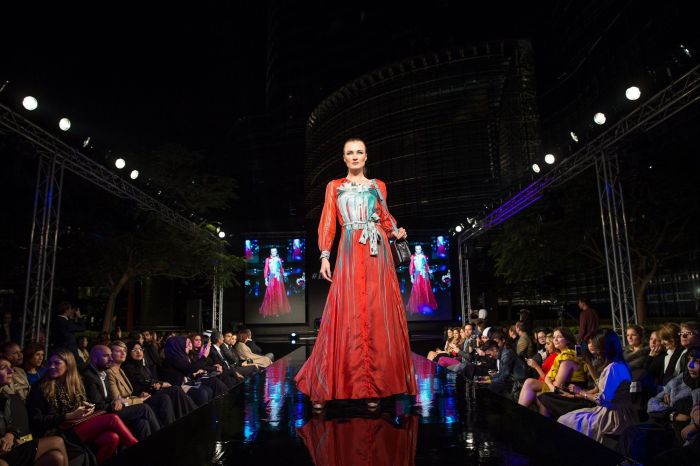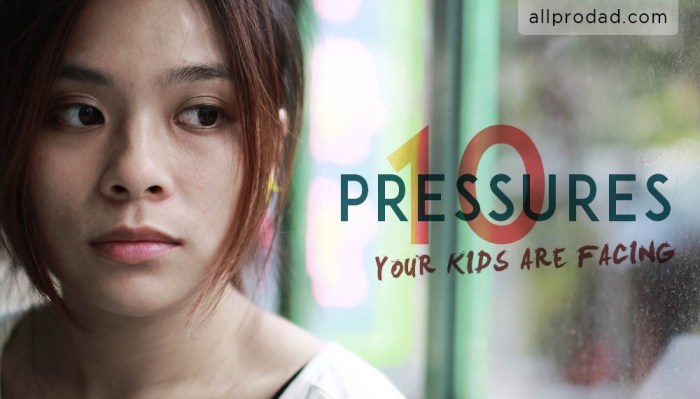Are you passionate about fashion and eager to turn your dreams into a thriving business? Look no further! In this comprehensive guide, we’ll take you on a transformative journey to becoming a successful fashion entrepreneur in just one week. Get ready to dive into the world of fashion, where creativity, innovation, and business acumen converge.
Throughout this guide, we’ll provide you with actionable steps, expert insights, and invaluable resources to help you launch your fashion venture with confidence. From market research to product development, branding to marketing, and financial management to legal considerations, we’ve got you covered.
So, buckle up and prepare to embark on an exciting entrepreneurial adventure that will empower you to make your mark in the fashion industry.
Fashion Entrepreneurship Overview
Fashion entrepreneurship involves creating and running a business that designs, produces, or sells fashion products or services. It encompasses various aspects, from concept development to marketing and sales.Successful fashion entrepreneurs possess creativity, business acumen, and a deep understanding of the industry.
Examples include Coco Chanel, founder of the eponymous luxury brand, and Ralph Lauren, known for his iconic American sportswear.
One-Week Intensive Program
The one-week intensive program is designed to provide aspiring fashion entrepreneurs with the foundational knowledge and practical skills necessary to launch and grow a successful fashion business. The program is structured around a series of interactive modules and activities that cover the key aspects of fashion entrepreneurship, from concept development to marketing and sales.The
program’s objectives include:* Developing a clear understanding of the fashion industry and its key players
- Identifying and validating a fashion business opportunity
- Creating a comprehensive business plan
- Developing and sourcing a product line
- Building a brand and marketing strategy
- Understanding the legal and financial aspects of fashion entrepreneurship
Program Modules and Activities
The program is divided into seven modules, each covering a different aspect of fashion entrepreneurship. The modules include:Module 1: Introduction to Fashion Entrepreneurship* Overview of the fashion industry
- Identifying and validating a fashion business opportunity
- Creating a business plan
Module 2: Product Development* Developing a product line
- Sourcing materials and manufacturers
- Quality control
Module 3: Branding and Marketing* Building a brand identity
- Developing a marketing strategy
- Using social media and digital marketing
Module 4: Sales and Distribution* Setting prices and managing inventory
- Building a sales channel
- Customer service
Module 5: Legal and Financial Considerations* Business formation and legal compliance
- Financing a fashion business
- Accounting and tax implications
Module 6: Fashion Industry Case Studies* Analysis of successful and unsuccessful fashion businesses
Identifying industry trends and best practices
Module 7: Pitching Your Business* Preparing a pitch deck
Presenting your business to investors and potential partners
Each module includes a combination of lectures, workshops, and group projects. Participants will have the opportunity to work with experienced fashion professionals and receive feedback on their business plans and ideas.
Benefits of Participating in the Program
Participating in the one-week intensive program offers a number of benefits, including:*
-*Short-term benefits
* Gaining a comprehensive understanding of the fashion industry and its key players
- Developing a clear business plan and product line
- Building a strong foundation for launching a successful fashion business
*
-*Long-term benefits
* Increased confidence and entrepreneurial skills
- Access to a network of fashion professionals and resources
- Potential to secure funding and partnerships for your fashion business
Market Research and Analysis
Market research is crucial for fashion entrepreneurs to make informed decisions and develop successful strategies. It provides valuable insights into target audience, market trends, and competition.
Methods for conducting market research include:
Primary Research
- Surveys: Gathering data from a sample of the target audience through questionnaires.
- Interviews: In-depth conversations with individuals to gather qualitative insights.
- Focus Groups: Moderated discussions with a small group of potential customers to explore specific topics.
Secondary Research
- Desk Research: Reviewing existing data, such as industry reports, market data, and competitor analysis.
- Industry Reports: Comprehensive studies providing insights into market size, trends, and key players.
- Market Data: Statistical information on market share, demographics, and consumer behavior.
Tools and resources for market analysis include:
- Google Trends: Tracks search volume and trends for specific s.
- SimilarWeb: Provides insights into website traffic, audience demographics, and industry benchmarks.
- Statista: Offers a comprehensive database of statistics and market research reports.
Benefits of conducting market research:
- Identifying Target Audience: Defining the specific group of customers the fashion brand will cater to.
- Understanding Market Trends: Identifying emerging trends and shifts in consumer preferences.
- Evaluating Competition: Analyzing competitors’ strengths, weaknesses, and market share.
- Making Informed Decisions: Using research insights to develop targeted marketing strategies, product designs, and pricing.
Product Development
Product development is a critical stage in the fashion entrepreneurship process. It involves translating market research and customer insights into tangible products that meet the needs of the target market. This process typically includes several key steps:
- Conducting market research: Understanding the market, competition, and customer needs is essential for developing products that resonate with the target audience.
- Identifying target customer: Defining the specific customer group that the product line will cater to helps focus the design and development process.
- Creating a product concept: This involves brainstorming ideas, sketching designs, and developing a clear vision for the product line.
- Developing prototypes: Creating physical or digital prototypes allows for testing and refinement of the product design before mass production.
- Sourcing materials: Selecting the appropriate materials for the product line based on factors such as quality, cost, and sustainability.
- Manufacturing products: Partnering with manufacturers to produce the products in accordance with the design specifications and quality standards.
Unique Value Proposition
A unique value proposition (UVP) is a key differentiator for any product line. It articulates the unique benefits and features that set the products apart from competitors. Developing a strong UVP requires understanding the target customer’s needs, identifying market gaps, and leveraging innovation to create a compelling value proposition.
Sourcing and Manufacturing
Establishing relationships with reliable suppliers is crucial for sourcing high-quality materials at competitive prices. Negotiating favorable terms, including payment schedules and delivery timelines, is also important. Ensuring quality control throughout the manufacturing process involves setting clear specifications, conducting regular inspections, and maintaining open communication with manufacturers.
Role of Technology
Technology plays a significant role in product development, from design to production and inventory management. Computer-aided design (CAD) software allows for precise and efficient design creation. 3D printing enables rapid prototyping, reducing lead times and facilitating design iterations. Radio-frequency identification (RFID) tags can enhance inventory management, providing real-time visibility and reducing stock discrepancies.
Sustainability
Incorporating sustainability into product development is increasingly important for ethical and environmental reasons. Using eco-friendly materials, reducing waste through efficient production processes, and implementing ethical manufacturing practices demonstrate a commitment to sustainability and align with growing consumer demand for responsible products.
Brand Building

Brand building is the process of creating a distinct and memorable identity for your fashion brand. A strong brand identity helps you stand out from the competition, build customer loyalty, and drive sales.
There are several key elements to developing a strong brand identity, including:
Brand Name and Logo
Your brand name and logo are the foundation of your brand identity. They should be memorable, relevant to your target audience, and visually appealing.
Brand Values
Your brand values are the core beliefs and principles that guide your business. They should be reflected in everything you do, from your marketing materials to your customer service.
Brand Messaging
Your brand messaging is the way you communicate your brand values and identity to your target audience. It should be consistent across all of your marketing channels.
Brand Experience
The brand experience is the way that customers interact with your brand. It should be positive and memorable, and it should reinforce your brand values.
Examples of Effective Brand Building Campaigns
Some examples of effective brand building campaigns include:
- Nike’s “Just Do It” campaign
- Apple’s “Think Different” campaign
- Coca-Cola’s “Share a Coke” campaign
Marketing and Sales
Marketing is crucial for fashion businesses to attract and retain customers. It helps create awareness, generate leads, and drive sales.
There are various marketing channels and strategies available, such as social media marketing, email marketing, content marketing, and paid advertising.
Effective Sales Techniques
Effective sales techniques include building strong customer relationships, understanding customer needs, and offering personalized solutions.
- Focus on customer experience: Create a positive and memorable experience for customers at every touchpoint.
- Use storytelling: Engage customers by telling compelling stories about your products or brand.
- Offer incentives: Provide discounts, promotions, or loyalty programs to encourage purchases.
– Operations and Logistics

Operations and logistics are crucial for the success of any fashion business. They involve the planning, execution, and control of activities that ensure the smooth flow of products from design to delivery.
Key operational aspects include inventory management, order fulfillment, customer service, and optimization.
Inventory Management
Effective inventory management is vital for meeting customer demand while minimizing waste. Best practices include:
- Forecasting demand using historical data, market trends, and industry insights.
- Optimizing stock levels to prevent overstocking or stockouts.
- Implementing inventory control systems to track stock levels, identify slow-moving items, and prevent shrinkage.
- Utilizing technology, such as radio frequency identification (RFID) tags, to enhance inventory accuracy and efficiency.
Order Fulfillment
Efficient order fulfillment processes are essential for delivering products to customers on time and in good condition. Key considerations include:
- Streamlining order processing systems to minimize errors and delays.
- Choosing appropriate shipping methods based on cost, speed, and reliability.
- Implementing tracking systems to provide customers with real-time updates on their orders.
- Partnering with reliable logistics providers to ensure timely and secure delivery.
Customer Service
Exceptional customer service is paramount in the fashion industry. Key guidelines include:
- Responding promptly and professionally to customer inquiries.
- Resolving complaints effectively and efficiently.
- Building customer loyalty through personalized experiences and rewards programs.
- Utilizing social media and other digital channels to engage with customers and address their concerns.
Optimization
Continuously optimizing operations is crucial for improving efficiency and reducing costs. Best practices include:
- Streamlining processes to eliminate bottlenecks and redundancies.
- Investing in technology to automate tasks and improve accuracy.
- Implementing lean manufacturing principles to reduce waste and improve productivity.
- Monitoring key performance indicators (KPIs) to identify areas for improvement and make data-driven decisions.
Financial Management
Financial management is a critical aspect of running a successful fashion business. It involves planning, organizing, directing, and controlling the financial resources of the company to achieve its objectives.
Effective financial management enables fashion businesses to make informed decisions about how to allocate their funds, manage their cash flow, and optimize their financial performance.
Budgeting
Creating a budget is essential for any fashion business. A budget Artikels the expected income and expenses for a specific period, typically a month or a year. It helps businesses track their financial performance and make informed decisions about how to allocate their resources.
When creating a budget, it is important to consider all sources of income and expenses. Income may include sales revenue, investment income, and government grants. Expenses may include costs of goods sold, operating expenses, and taxes.
Cash Flow
Cash flow is the movement of money into and out of a business. It is important to manage cash flow carefully to ensure that the business has enough cash on hand to meet its obligations.
There are a number of ways to improve cash flow, such as:
- Increasing sales
- Reducing expenses
- Collecting accounts receivable promptly
- Paying accounts payable on time
Profit Analysis
Profit analysis is the process of evaluating a business’s financial performance. It involves comparing actual results to budgeted results and identifying areas where the business can improve its profitability.
There are a number of different profit analysis techniques, such as:
- Gross profit analysis
- Operating profit analysis
- Net profit analysis
Financial Planning
Financial planning is the process of developing a roadmap for the future financial health of a business. It involves setting financial goals, identifying the resources needed to achieve those goals, and developing strategies to manage financial risks.
A financial plan should be reviewed and updated regularly to ensure that it is aligned with the business’s changing needs.
Financial Risk Management
Financial risk management is the process of identifying, assessing, and managing financial risks. Financial risks can include:
- Credit risk
- Market risk
- Operational risk
Effective financial risk management can help businesses protect themselves from financial losses and improve their overall financial performance.
Legal Considerations
Navigating the legal landscape is crucial for fashion entrepreneurs. This section explores intellectual property rights, contracts, tax regulations, and resources for legal guidance.
Intellectual Property Rights
Protecting your unique designs and creations is paramount. Patents, trademarks, copyrights, and design rights provide various forms of intellectual property protection. Understanding their scope and application is essential to safeguard your assets.
Contracts
Contracts are legally binding agreements that govern business relationships. Fashion businesses commonly engage in contracts with suppliers, manufacturers, and distributors. Comprehending contract types, essential clauses, and negotiation strategies is vital to protect your interests.
Tax Regulations
Tax laws and regulations vary depending on your jurisdiction. Understanding income tax, sales tax, and import/export duties is crucial for managing your finances and complying with legal obligations.
Resources for Legal Advice
Seeking professional legal advice can help you navigate complex legal matters. Attorneys specializing in fashion law, online legal databases, and industry associations provide valuable resources for guidance and support.
Case Studies
Case studies offer insights into real-world legal issues faced by fashion businesses. By examining how these challenges were resolved, you can learn from others’ experiences and mitigate potential risks.
Mentorship and Support
Mentorship is crucial for fashion entrepreneurs as it provides guidance, insights, and support from experienced professionals. Mentors can help entrepreneurs navigate the challenges of the industry, develop their skills, and build valuable connections.Joining industry organizations and networks offers opportunities to connect with other entrepreneurs, learn from experts, and stay updated on industry trends.
These platforms provide a supportive environment where entrepreneurs can share experiences, collaborate on projects, and access resources.
Finding Mentors and Support Groups
Various resources are available to help fashion entrepreneurs find mentors and support groups. Industry events, online platforms, and local business incubators often connect entrepreneurs with experienced professionals willing to share their knowledge and expertise.Additionally, organizations like the Fashion Institute of Technology (FIT) offer mentorship programs specifically tailored to fashion entrepreneurs, providing access to industry leaders and tailored support.
Technology and Innovation
Technology is transforming the fashion industry, from design to production to retail. By embracing technology, fashion entrepreneurs can enhance their operations, marketing, and customer experience.
Technology can be used to:
- Streamline design and production processes
- Create personalized shopping experiences
- Track customer behavior and preferences
- Develop new products and services
Innovative Fashion Technologies
Some innovative fashion technologies include:
- 3D body scanning for custom-fit clothing
- Artificial intelligence (AI) for personalized style recommendations
- Virtual and augmented reality (VR/AR) for immersive shopping experiences
- Blockchain for supply chain transparency
- Wearable technology for health and fitness tracking
Sustainability and Ethics
Sustainability and ethical considerations are crucial in the fashion industry, which has a significant impact on the environment and society.
Ethical considerations in fashion encompass labor practices, environmental impact, and animal welfare. Ensuring fair labor practices, minimizing environmental damage, and respecting animal rights are essential for responsible fashion production and consumption.
Best Practices for Sustainable and Ethical Fashion
Best practices for sustainable and ethical fashion include:
- Using sustainable materials, such as organic cotton, recycled fabrics, and biodegradable fibers.
- Reducing waste throughout the production process, from design to packaging.
- Supporting fair labor practices, including fair wages, safe working conditions, and workers’ rights.
Case Studies

Learning from the experiences of successful fashion entrepreneurs is invaluable. Case studies offer insights into the challenges, strategies, and key factors that contribute to their success.
Zara
Zara, a global fashion retailer, is renowned for its fast-fashion model. Zara’s success stems from its ability to quickly identify and respond to fashion trends, its efficient supply chain, and its affordable pricing.
Patagonia
Patagonia, an outdoor apparel and gear company, is known for its commitment to sustainability and environmental activism. Patagonia’s success is attributed to its strong brand identity, its high-quality products, and its dedication to ethical practices.
Allbirds
Allbirds, a footwear company, has gained popularity for its sustainable and comfortable shoes. Allbirds’ success is due to its innovative materials, its focus on comfort, and its commitment to environmental responsibility.
Challenges Faced by Fashion Entrepreneurs
- Competition from established brands
- Fluctuating fashion trends
- Supply chain disruptions
- Rising production costs
- Sustainability concerns
Strategies for Success
- Identify a niche market
- Create a strong brand identity
- Focus on product quality
- Build a loyal customer base
- Embrace sustainability and ethical practices
Resource Directory
To support your journey as a fashion entrepreneur, we have compiled a comprehensive directory of resources. This directory provides links to industry organizations, support groups, educational programs, funding opportunities, networking events, mentorship programs, and other professional development resources.
We have organized the directory into categories for easy navigation, making it simple for you to find the resources you need.
Industry Organizations
- Council of Fashion Designers of America (CFDA)
- Fashion Group International (FGI)
- National Retail Federation (NRF)
Support Groups
- Fashion Incubator San Francisco
- New York Fashion Tech Lab
- The Fashion Innovation Hub
Educational Programs
- Fashion Institute of Technology (FIT)
- Parsons School of Design
- Central Saint Martins
Funding Opportunities
- Fashion Startup Fund
- New York City Economic Development Corporation (NYCEDC) Fashion Innovation Fund
- Small Business Administration (SBA) Loans
Networking Events
- Fashion Week
- MAGIC
- Texworld USA
Mentorship Programs
- Fashion Accelerator
- The Fashion Incubator
- The Mentorship Program for Fashion Entrepreneurs
Success Stories
In the world of fashion entrepreneurship, countless individuals have turned their passion for style into thriving businesses. Their journeys are filled with inspiration, determination, and valuable lessons that can empower aspiring entrepreneurs.
These success stories showcase the diversity of fashion ventures, from high-end couture to sustainable streetwear. They highlight the challenges, triumphs, and strategies that have shaped these businesses, providing valuable insights for those seeking to launch their own fashion endeavors.
Fashion Industry Icons
- Coco Chanel: The founder of the iconic Chanel brand, Coco Chanel revolutionized women’s fashion with her timeless designs and groundbreaking business acumen.
- Ralph Lauren: Known for his preppy and sophisticated style, Ralph Lauren built a global fashion empire that embodies the American dream.
- Donna Karan: The founder of Donna Karan New York, Donna Karan is renowned for her minimalist and empowering designs that empower women.
Contemporary Fashion Entrepreneurs
- Christian Siriano: A Project Runway winner, Christian Siriano has become a successful designer known for his glamorous and inclusive collections.
- Maria Cornejo: The founder of Zero + Maria Cornejo, Maria Cornejo is a pioneer in sustainable fashion, creating ethical and timeless pieces.
- Aurora James: The founder of Brother Vellies, Aurora James is an advocate for ethical and sustainable fashion, empowering artisans and celebrating African culture.
Last Recap
Congratulations! By completing this one-week intensive program, you’ve laid a solid foundation for your fashion entrepreneurial journey. Remember, building a successful business takes time, dedication, and a relentless pursuit of excellence. Stay informed about industry trends, embrace innovation, and never stop learning.
Connect with mentors, join industry organizations, and seek support from fellow entrepreneurs. With passion, perseverance, and the knowledge you’ve gained, you have the potential to transform your fashion dreams into a thriving reality. The world of fashion awaits your unique creations and entrepreneurial spirit.
Go forth and make your mark!
FAQ
Is this program suitable for complete beginners with no prior fashion experience?
Absolutely! This program is designed to cater to individuals from all backgrounds, whether you’re a seasoned fashion professional or a passionate newcomer. We’ll guide you through each step, providing the necessary knowledge and tools to kickstart your fashion entrepreneurial journey.
How much time commitment is required for this one-week program?
The program is designed to be intensive, requiring approximately 6-8 hours of dedicated study and practical work each day. We recommend setting aside specific time slots throughout the week to ensure you can fully engage with the material and complete the assignments.
What kind of support can I expect during and after the program?
Throughout the program, you’ll have access to our team of experienced mentors and industry experts who are dedicated to providing guidance and support. Additionally, you’ll join a community of fellow fashion entrepreneurs, creating a valuable network for ongoing collaboration and support beyond the program’s duration.

